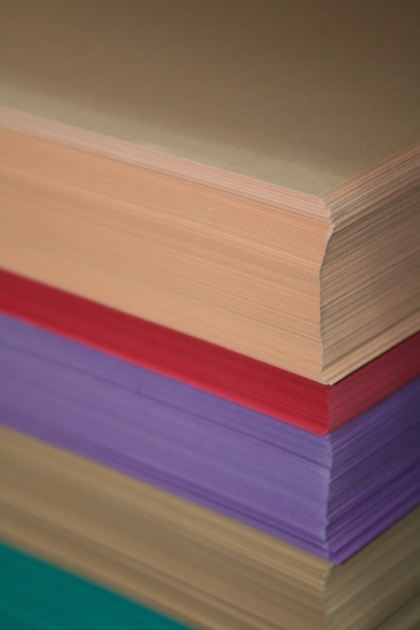
The Gemara asks, what services in the Temple did the extra Kolbons fund? It is a dispute amongst the Tannaim:
ṪÖḞṪÖṁṪṪÖẁṪ ṪÖẁṪṪÖỳ ṪÖṖṪ§ÖỳṪÖṗṪÖẁÖỳṪÖỳṪÖṗṪ ṪÖṗṪẂ Ṫ ṪÖṗṪĊÖḞṪÖṀṪṪ. ṪẀÖṀṪÖṀÖỳṪ ṪÖṁṪÖṀṪṪẀ ṪṪÖṗṪÖṁṪẀ. ṪÖṖṪ©ÖḞṪÖỳṪ§ÖẁṪÖṀṪṪ. ṪẀÖṀṪÖṀÖỳṪ ṪÖẁṪÖẄÖẁṪẀ ṪṪÖṗṪÖṁṪẀ. ṪÖṀṪ ÖḞṪÖẁṪÖẁṪ. ṪẀÖṀṪÖṀÖỳṪ Ṫ©ÖṀṪṪÖḞṪḃṪÖṗṪ ṪÖṖṪ©ÖḞṪÖỳṪṪÖỳṪẀÖṀṪ ṪṪÖṗṪÖṁṪẀ. ṪẀÖṀṪṪ§ÖỳṪÖỳṪḃÖṁṪ ṪÖẁṪÖẁṪ ṪÖḞṪḊÖṀṪṪĊÖỳṪÖỳṪ ṪÖḞṪÖṁṪṪẂ Ṫ§ṪÖṗṪÖ¶Ṫ©Ṫ ṪÖṖṪ§ÖẁÖỳṪÖẁṪ©ÖṀṪṪṪ. ṪÖ¶ÖỳṪ ṪḃÖṖṪÖỳÖṖṪṪ ṪṪÖṗṪÖṁṪẀ. Ṫ©ṪṪṪÖḞṪÖẁṪ ÖṀṪṪ ṪÖẁṪṪÖỳ Ṫ ṪÖṗṪÖḞṪÖṀṪṪ ṪṪÖṗṪẂÖẁṪ ṪÖṀÖỳṪ©ÖḞṪṪÖẁṪẀÖẁṪ. ṪÖḞṪÖṁṪ©Ṫ ṪṪÖṗṪÖḞṪẀÖṀṪṪ. ṪÖḞṪṪÖṗṪḊÖẁṪÖṖṪẂ ṪÖḞÖỳṪẀÖẁṪÖṀṪṪ.
âḊThe Gemara cites a baraita with regard to the additional premium: To where would the premiums fall, i.e., what was done with them? Rabbi Meir says: They would add them to the shekels themselves, for the daily and additional offerings. Rabbi Elazar says: They would be allocated to free-will offerings, i.e., the money would go toward the burnt-offerings that were sacrificed when the altar was idle. âḊRabbi Shimon Shezuri says: They would use the premiums to buy gold plating, and this served as covering for the inner walls of the house of the Holy of Holies. (Note: The versions of text vary there is a connecting “and” between “gold plating” and “Holy of Holies”. The difference being, if the gold plating went only toward the Holy of Holies or also toward some other needs as well, such as gold threads for the priestly vestments.) Ben Azzai says: The money changers responsible for collecting the shekels would take them as their payment for their services, as they had to take time off from their regular work. And some say that the premiums were spent on transportation expenses, i.e., the cost of moving the shekels from their collection sites to Jerusalem.
What are the reasons for these various opinions? I am unclear but will attempt some explanations for Rabbi Meir, Rav Shimon Shezuri and Ben Azai, that may be leshittasam.
Rabbi Meir is an easy one as Hon Ashir (Mishna Shekalim 1:6) explains that according to Rabbi Meir, the Kolbon surcharge is Deoraysa, and thus it goes to the original cause. But what is the basis for the other opinions?
The gold thread position was suggested by Rav Shimon Shezuri. I’m not sure what to make of it exactly, but Shezuri means rope twister and twine maker, so he knew the craft of thread and ropes. It’s notable that in the Bigdei Kehuna, clothes of the Cohen had a wondrous technological element, in the use of pounded gold threads. Ramban (Shemos 39:3) says the Torah elaborates on the process as opposed to other artisanal work in the Mishkan, to emphasize the technological feat of making gold thread. So is this the origin of Rabbi Shimon’s name, because of his opinion about the surcharge funding the gold twine? Or was he a twine maker and somehow that made him more aware of the need to have support for the gold twine.
Regarding Ben Azzai, we find an interesting dispute between him and Rabbi Akiva that may be relevant.
ṪḂṪĊṪẀṪ Ṫ§ṪṪ©ṪṪ Ṫ:ṪṪ
[ṪṪ] "ṪṪ ṪẂṪ§Ṫ ṪṪṪ ṪẂṪṪẀ ṪṪẂ ṪṪ Ṫ ṪḃṪṪ" – Ṫ ṪṪ§Ṫ ṪṪẂṪ ṪṪ ṪṪṪẀ ṪṪḃṪṪ"Ṫ. "ṪṪṪṪṪẂ ṪṪẀṪḃṪ ṪṪṪṪ" – ṪẀṪṪ ṪḃṪ§ṪṪṪ ṪṪṪṪẀ ṪṪ ṪṪṪ ṪṪṪṪ ṪṪẂṪṪẀṪ. ṪṪ ṪḃṪṪṪ ṪṪṪṪẀ "ṪṪ ṪḂṪĊṪẀ ṪẂṪṪṪṪṪẂ ṪṪṪ" – ṪṪ ṪṪṪ ṪṪṪṪ ṪṪṪ.
âḊ12) "You shall not take revenge and you shall not bear a grudge against the children of your people": You may take revenge of and bear a grudge against others (idolators). "And you shall love your neighbor as yourself": R. Akiva says: This is an all-embracing principle in the Torah. Ben Azzai says: (Bereshith 5:1) "This is the numeration of the generations of Adam" — This is an even greater principle.
What Ben Azzai seems to be saying is that there is an overriding principle beyond love your neighbor as yourself. The most important principle is something beyond the local neighborly function, and instead a societal social civic and civilization function. If so, it may make sense why he believed the surcharge should support public works such as the money changers or transportation fees.
Translations Courtesy of Sefaria, except when, sometimes, I disagree with the translation ![]()
If you liked this, you might enjoy my Relationship Communications Guide. Click on the link above.
Rabbi Simcha Feuerman, Rabbi Simcha Feuerman, LCSW-R, DHL is a psychotherapist who works with high conflict couples and families. He can be reached via email at simchafeuerman@gmail.com
 Previous
Previous

